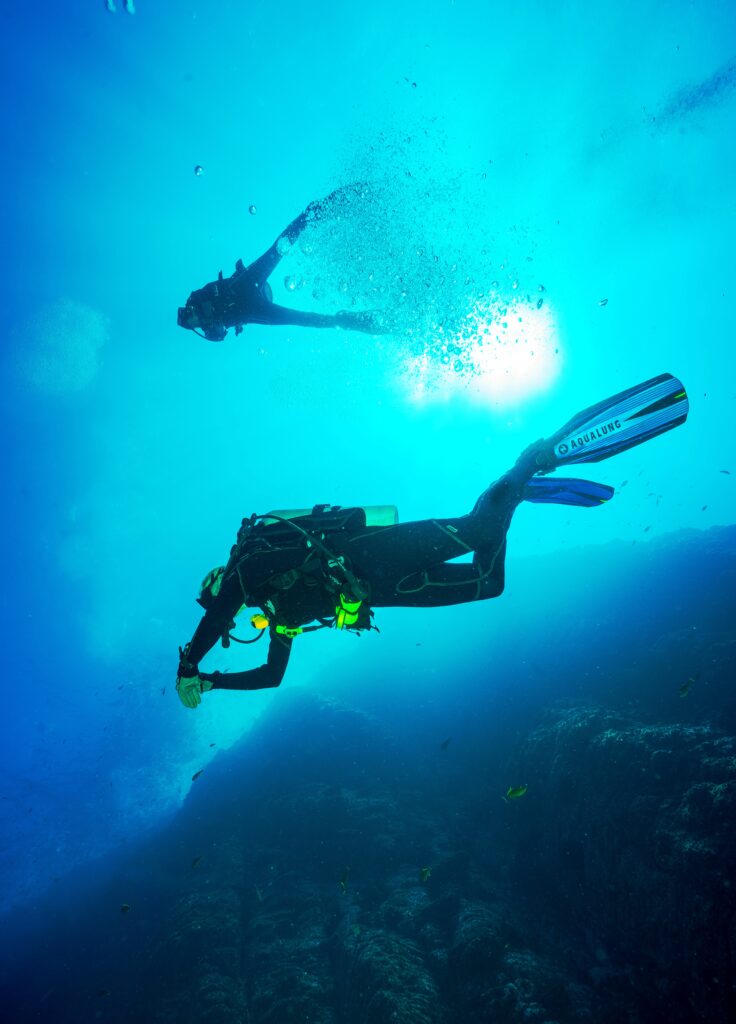So you’ve been bitten by the shark diving bug, huh? The thrill of exploring the depths and coming face to face with these magnificent creatures is truly unparalleled. But before you take the plunge, you’ve got one burning question: how long does it take to shark dive? Well, my friend, you’ve come to the right place. In this article, we’re going to dive (pun intended) into the world of shark diving and explore the factors that can influence the duration of your underwater adventure.
Picture this: you’re submerged in the crystal-clear waters, surrounded by the mesmerizing ocean life, and the anticipation of encountering a shark is building with every passing second. But time seems to stand still, and you start to wonder, how long have I been down here? Don’t worry, we’ve got you covered. In this comprehensive guide, we’ll explore the different elements that impact the duration of a shark dive, from the type of dive to the location and even the behavior of these fascinating creatures. So grab your wetsuit and get ready for a journey into the depths of shark diving.
Preparation
Selecting a Shark Dive Location
Before embarking on a thrilling shark diving adventure, the first step is to select a suitable shark dive location. Consider factors such as the types of sharks you wish to encounter, the proximity of the dive site to your current location, and the visibility and conditions of the water. Research various shark dive destinations and take into account the seasonality of shark sightings in each location.
Obtaining Scuba Certification
To ensure a safe and enjoyable shark diving experience, it is important to obtain scuba certification. Scuba diving involves breathing underwater using a self-contained underwater breathing apparatus (SCUBA) and requires training to master the necessary skills. Enroll in a scuba diving course offered by a reputable diving school, and complete the required coursework, pool sessions, and open water dives to earn your certification.
Booking a Shark Dive
Once you have decided on your desired shark dive location and obtained scuba certification, it’s time to book your shark dive. Research and choose a reputable dive operator that offers shark diving experiences. Read reviews from past divers and ensure the operator follows safety protocols and practices responsible shark diving. Consider the availability of the dive operator, the cost of the dive, and any additional services provided.
Getting to the Dive Site
Transportation to Dive Location
To reach the shark dive location, you will need to plan for transportation. Depending on the dive site’s accessibility, you may need to travel by land, air, or sea. If the dive site is within driving distance, consider renting a car or arranging for a ride. If the dive site is located in a different country or requires long-distance travel, you may need to book flights and make arrangements for airport transfers.
Arriving at the Dive Site
Once you have reached the dive site, it is essential to familiarize yourself with the surroundings and check in with the dive operator. Arrive early to allow time for registration, completing any necessary paperwork, and attending the pre-dive briefing. Take the opportunity to relax, get acquainted with fellow divers, and soak in the excitement of the upcoming shark dive.

Pre-Dive Briefing
Introduction to Shark Diving
Before plunging into the underwater world teeming with sharks, a thorough pre-dive briefing is conducted by the dive operator. This briefing serves to educate divers about the specific species of sharks they are likely to encounter, their behavior patterns, and the appropriate interactions to ensure safety. Pay close attention to the information provided, as it will help you understand the sharks’ natural habitat and contribute to a successful dive.
Safety Procedures and Guidelines
During the pre-dive briefing, the dive operator will outline the safety procedures and guidelines that must be followed while interacting with sharks. These may include maintaining a safe distance from the sharks, avoiding sudden movements or loud noises, and respecting the sharks’ territory. Additionally, the use of dive signals and communication techniques will be explained to facilitate effective communication between divers underwater. Be sure to ask any questions you may have and seek clarification on any unclear instructions.
Equipment Setup
Assembling Scuba Gear
Before entering the water, it is crucial to properly assemble your scuba gear. Start by laying out all the necessary equipment, including the dive suit, BCD (buoyancy control device), regulator, mask, fins, and weight belt. Follow the manufacturer’s instructions or seek assistance from dive professionals to ensure the gear is assembled correctly. Check that all the equipment is in good working condition, with no signs of damage or wear.
Fitting Dive Equipment
Once the scuba gear is assembled, it’s time to ensure it fits comfortably and securely. Check the fit of the dive suit, making sure it allows for unrestricted movement and is snug but not overly tight. Adjust the straps on the BCD to achieve a comfortable fit and test the functionality of the regulator by taking a few breaths through it. Finally, put on the mask and fins, ensuring they are snug and do not cause discomfort. Properly fitting equipment is crucial for a safe and enjoyable shark diving experience.

Entering the Water
Preparing for Entry
Before entering the water, it is essential to conduct a final check of your equipment and mentally review the dive plan. Ensure that all the gear is securely fastened and in proper working order. Familiarize yourself with the entry point and be aware of any potential hazards or obstacles in the water. Communicate with your dive buddies and the dive operator to confirm readiness and ensure everyone is on the same page.
Descending to the Dive Site
Once all preparations are complete, it’s time to descend into the underwater realm where the sharks await. Follow the instructions provided during the pre-dive briefing and enter the water with controlled movements. Descend slowly, equalizing your ears as you go deeper. Maintain close contact with your dive buddy and remain aware of your surroundings. The descent is an exciting moment as you transition from the surface to the breathtaking world beneath.
Shark Encounter
Spotting Sharks
As you explore the dive site, keep your eyes peeled for the first glimpse of majestic sharks. Depending on the dive location, you may encounter a variety of shark species, ranging from nurse sharks to reef sharks, and even the coveted apex predators like the great white or tiger sharks. Maintain a relaxed and observant mindset, scanning the surroundings for any signs of movement or shadowy figures beneath the water’s surface. Stay patient, as sharks may take their time to appear.
Observing Shark Behavior
When in the presence of sharks, it is important to observe and respect their behavior. Remember that you are a visitor in their natural habitat. Observe from a safe distance and avoid any sudden or aggressive movements. Watch for the sharks’ body language, such as their swimming patterns, posture, and any interactions with their environment. The dive operator may provide insights on the behavior of specific shark species to further enhance your understanding and appreciation of these incredible creatures.

Dive Duration
Limited Bottom Time
The duration of a shark dive can vary depending on several factors, including the dive site, depth, and specific dive plan. Most shark dives have a limited bottom time, typically ranging from 30 to 60 minutes. This ensures that divers can safely exit the water before reaching their no-decompression limits. The exact bottom time allowed will be determined based on the dive operator’s guidelines and the specific conditions of the dive site.
Multiple Shark Dives
For avid shark enthusiasts, multiple shark dives may be scheduled in a single day. This allows divers to maximize their shark encounters and explore different areas within the dive site. Between dives, divers will typically take a surface interval to rest, rehydrate, and analyze the dive experience. The number of dives in a day will depend on the dive operator’s schedule and the diver’s physical readiness.
Ascending and Exiting
Following Decompression Stops
As the dive comes to an end, it is essential to follow any required decompression stops to off-gas excess nitrogen safely. These stops allow your body to adjust to the changing pressure and prevent the risk of decompression sickness. Ascend slowly and maintain a controlled pace, making the necessary safety stops at predetermined depths. Use your dive computer or follow the dive leader’s instructions to ensure a safe and gradual ascent.
Boat Pickup or Shore Exit
Once you have completed your decompression stops, it’s time to make your way back to the surface. Depending on the dive site, you may either be picked up by a boat or make a shore exit. Follow the established procedures and communicate with the dive operator to determine the appropriate method of exit. Depending on the dive logistics, you may need to remove your scuba gear in the water or on the boat/shore before transitioning back to dry land.

Post-Dive Procedures
Removing Dive Equipment
After exiting the water, it is important to safely remove your dive equipment. Be mindful of any loose or entangling straps and take care not to damage the gear while removing it. Rinse the equipment with fresh water to remove any salt or debris and hang it to dry in a well-ventilated area. Proper maintenance and care of your dive equipment will ensure its longevity and continued performance for future dives.
Debriefing and Discussion
To wrap up the shark diving experience, a debriefing and discussion session may be conducted by the dive operator. This provides an opportunity for divers to share their observations, ask questions, and reflect on the dive. Share your experiences with fellow divers, exchange stories, and learn from the insights of others. The debriefing also allows the dive operator to gather feedback and address any concerns or suggestions raised by divers.
Conclusion
Total Duration of a Shark Dive
The total duration of a shark dive, from the initial preparation to the post-dive procedures, can range from several hours to a full day. Factors such as the distance to the dive site, transportation logistics, and the number of dives scheduled all contribute to the overall duration. It is important to allocate sufficient time for each stage of the dive, ensuring a relaxed and enjoyable experience without feeling rushed.
Factors Affecting Dive Duration
Several factors can affect the duration of a shark dive. These include the specific dive plan, the number of divers in the group, the visibility and conditions of the water, and the behavior of the sharks themselves. It’s important to remember that nature is unpredictable, and shark encounters cannot be guaranteed. Flexibility and patience are key, as some dives may be shorter than anticipated while others may offer extended opportunities to observe these incredible creatures in their natural habitat.
Shark diving offers a unique and exhilarating experience for those seeking adventure and a deeper understanding of these magnificent predators. With thorough preparation, proper equipment, and adherence to safety protocols, a shark dive can be a memorable and rewarding experience. So, strap on your scuba gear, embark on an unforgettable journey, and dive into the enthralling world of sharks!

- Can You Dive With Sharks In California? - August 19, 2023
- What Are The Rules Of Shark Cage Diving? - August 19, 2023
- Where In Florida Can You Dive With Sharks? - August 19, 2023








